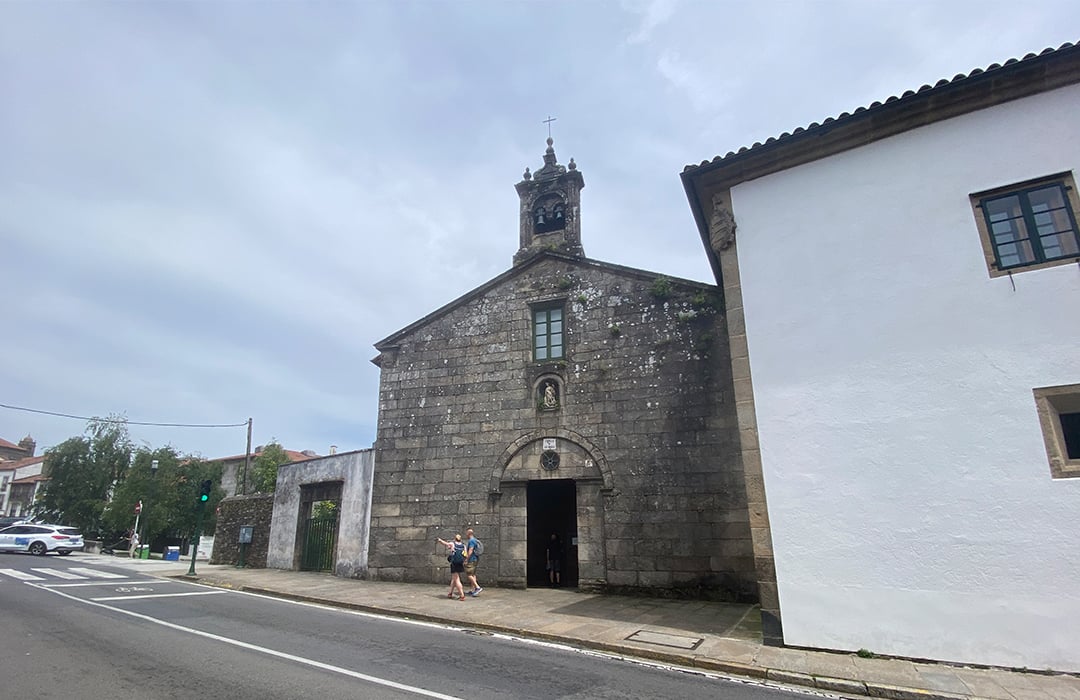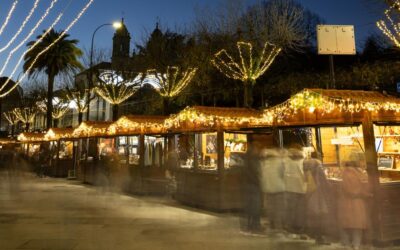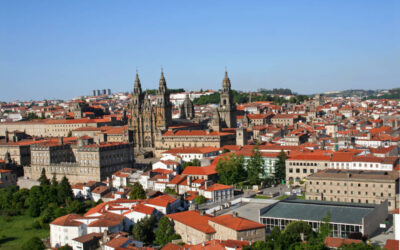The complex formed by the
Old Hospital and the Church of San Roque
is located in an architectural itinerary composed of several points of tourist and artistic interest of great patrimonial value, such as the Museo do Pobo Galego (Museum of the Galician People) and the Church and Convent of San Domingos de Bonaval.
The first was promoted in 1578 by Archbishop Francisco Blanco, with the aim of responding to and sheltering those affected by the plague epidemics that affected the Galician capital in the 16th century.
It is located at the top of Rúa das Rodas, just where Rúa de San Roque begins. The building is named after one of the most evoked saints for protection against this disease. Thus, the building was projected in the 16th century and its design was in charge of the master builder of the Cathedral of Compostela, Gaspar de Arce. It was later rebuilt in the 18th century.
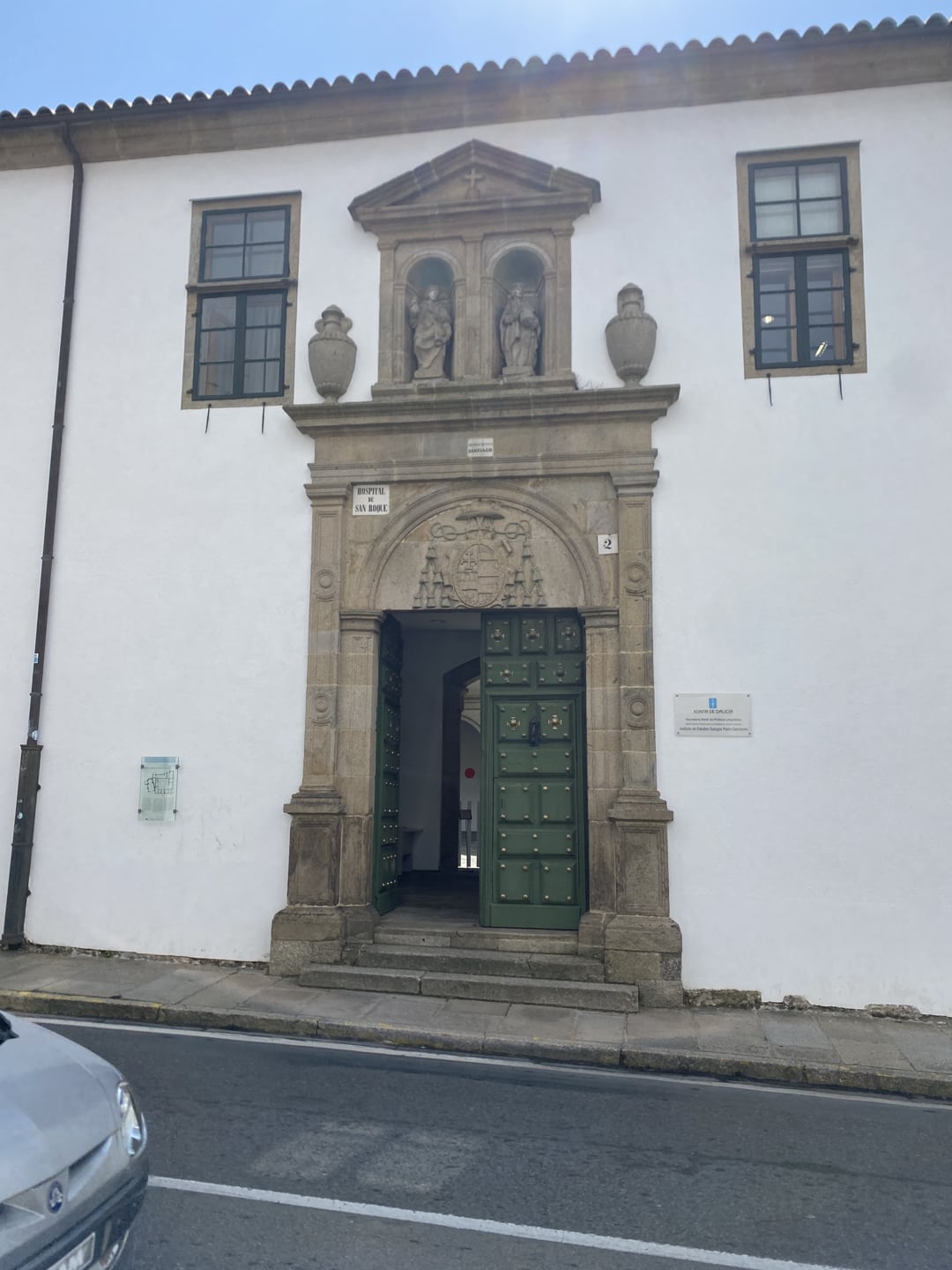
Of its original work, the Renaissance façade is preserved, whose structure has the form of a semicircular arch arranged on Tuscan pilasters. In the tympanum of the doorway, there is a coat of arms belonging to the bishop who created the old hospital. The structure of the building has a rectangular floor plan and a cloister with two galleries, with four arches on each side that connect on Doric columns.
The baroque temple, on the other hand, dates from the 18th century and houses one of the most important altarpieces made by the master Simón Rodríguez.
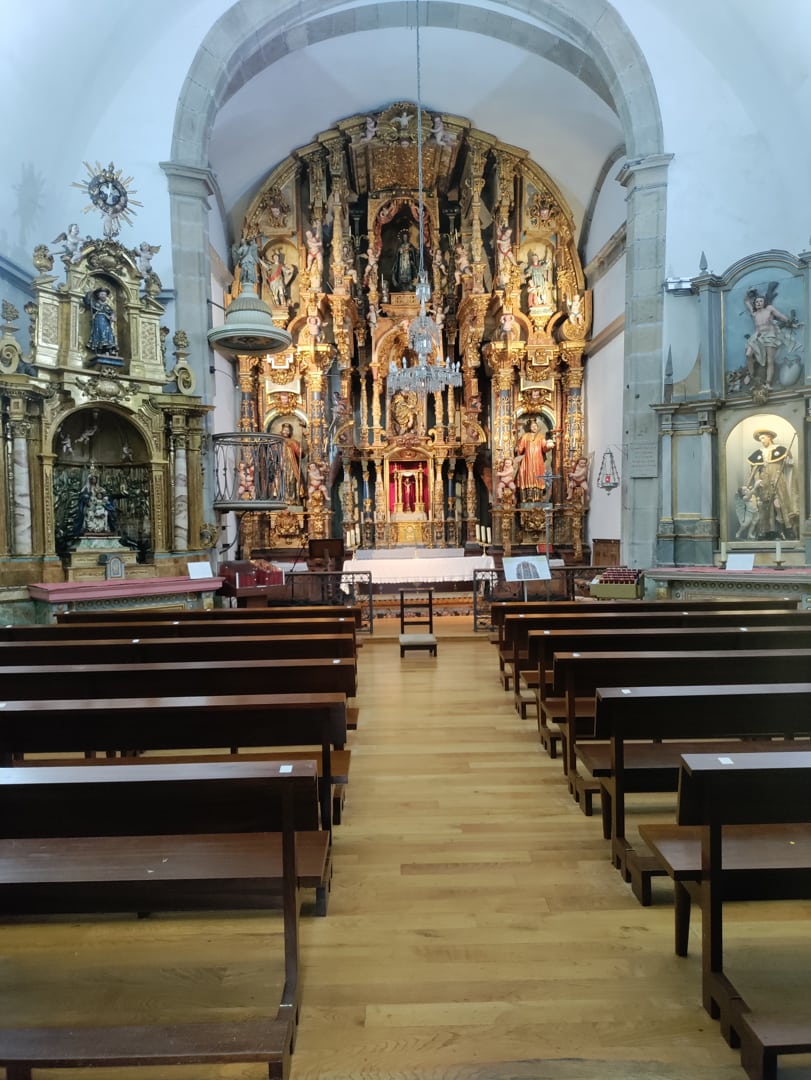
The Old Hospital is currently used for various purposes by scientific organizations and public entities.
Among them, it is the headquarters of the Padre Sarmiento Institute, linked to the Consejo Superior de Investigaciones Científicas (CSIC), of the Secretaria Xeral de Política Lingüística de la Xunta de Galicia or of the Ramón Piñeiro Center.
The cloister is open to visitors every day of the year, from 8:00 a.m. to 8:00 p.m., and the church is a regular place of worship. It also hosts a solemn mass on August 16 on the occasion of the feast of St. Roque.

